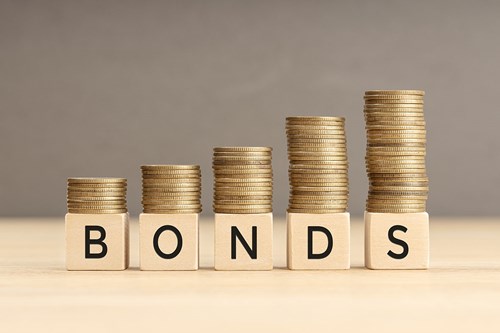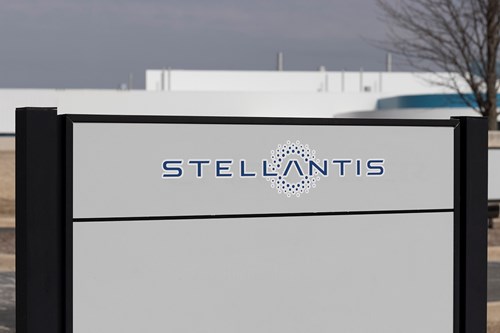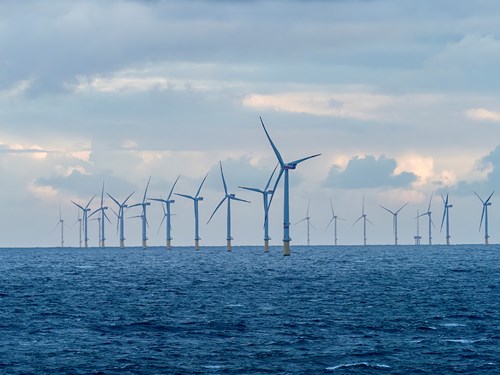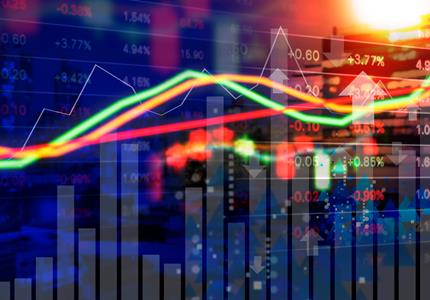

2023 Q3 Newsletter
“I guess it’s the world that we live in
It’s not too late for that
This is the world that we live in
And no, we can’t go back”
The Killers, 2008
Please click here to view/download the PDF version of this update.
In our final newsletter of last year, Shaun McDade referenced a quote from JK Galbraith: “The only function of economic forecasting is to make astrology look respectable.” And, whilst a little harsh in some ways, it doesn’t seem particularly ill‑conceived over the last year or two.
The direction of inflation and interest-rates continues to dominate investment headlines and, in turn, market sentiment towards both bonds and equities. Even if we look back at how the experts (the US Fed and the Bank of England) have done in terms of forecasting such outcomes, it hasn’t been great. Right up until almost the middle of 2022 both Central Banks were talking in terms of “transient inflation” and there wasn’t any need to get too excited. The rhetoric now is at the opposite end of the scale, with the Fed suggesting that rates will be higher for longer. Confusingly, at the same time there is a suggestion that rates could gradually fall over the next couple of years – while inflation recedes, unemployment rises only slightly, and GDP growth stays pretty steady around 2%. Erm, talk about the art of positive thinking!
And then there’s Fed Governor, Jerome Powell, at the post-FOMC (Federal Open Market Committee) press conference on 20 September:
“So I think people should know that economic forecasting is very difficult, and these are highly uncertain forecasts. But these are our forecasts.”
Not a lot to hang your hat on, then!
As readers will know, although we spend time trying to understand the world we live in, we definitely don’t try to make short-term asset allocations based on economic forecasting. If the Fed and the Bank of England, with all their resources, can’t get close to anything resembling accuracy, then it seems sensible that we spend our time elsewhere.

Our focus is on long-term investment themes that we believe will:
a) stand the test of time;
b) help investors navigate the changing macro-environment; and,
c) provide our clients with solid investment performance over the long term.
At the risk of sounding flippant, we also understand that inflation and interest rates could rise, stay the same or fall! Accordingly, for the last year or so we have adopted a strategy of having a foot in both camps. We have exposure to investments that will perform better in a falling inflation and interest-rate environment (longer-dated bonds and growth stocks), alongside investments that should outperform in an environment of higher rates and inflation (shorter-dated, high-yield bonds and value-orientated equities). Whilst this is inevitably imperfect (i.e., we’ll never be 100% right), it does allow us to remain true to our investment themes whilst providing us with the flexibility to adjust to an ever-changing macro-environment.
Cautious Portfolios
Lower Risk
by Tom Craske
Objective: The Cautious portfolio’s objective is to increase its value by predominantly allocating capital to fixed income investments. The portfolio can also invest into global blue-chip equities with strong cashflows and progressive dividend policies. A neutral position would be a 75% bond/25% equity split and the maximum equity-weighting of approximately 35%. The cash generated can be re-invested to provide capital or taken as an income stream.
You don’t have to look far to find an example of the back and forth between optimism and uncertainty that has characterised global financial markets in 2023. Our Cautious portfolios oscillated between a 1% gain and a 1% decline on two separate occasions through the third quarter, finishing the period exactly where it started. Our portfolio was flat against the sector, which declined -0.3% (1 & 2) (combining moves in capital values and income received). A perfect indication of the doubt and lack of direction existing in today’s markets.
Underlying Investments
Despite the uncertain backdrop, most of the underlying funds in the Cautious strategy gained over the quarter. Notable performers included two recent additions to the strategy, which was pleasing to see. Added in the wake of the inflation-dominated year of 2022 to provide additional diversification, Sanlam Hybrid Capital Bond and GAM Star Cat Bond both did well – as did longstanding position Schroder Strategic Credit. They posted returns of 3.6% (3), 3.0% (4), and 2.3% (5) respectively. It is good to see some of the changes made to the portfolio perform as expected as we navigate this challenging market environment.
Some positions, however, have been a drag on performance. Concerns surrounding the offshore wind industry made headlines over the summer, and, as a result, KBI Global Infrastructure had a difficult quarter, finishing the period with a decline of -7.6% (6). The Global Solutions commentary later in the newsletter is worth a read for a more detailed breakdown of the offshore wind sector.
Allianz Strategic Credit is another fund that has struggled for performance. Over the quarter, the fund, positioned to perform in a recessionary environment, suffered – as it has for a large part of 2023 since growth has remained robust and inflation stickier than expected. The performance prompted the team to consider our allocation to the fund, as well as to Ruffer Total Return Fund, whose function in the Cautious portfolio is to provide similar protection. As a result of these discussions, the decision was made late in the quarter to trim our allocation to Allianz by 2% and allocate the proceeds to the iShares Ultrashort Bond Fund. While Allianz’s thesis may yet prove correct, the risk of further downside, should rates remain elevated outweighs the upside potential that the fund could deliver in a recessionary environment. Ruffer, on the other hand, due to what we see as a positively-skewed return profile, has less downside risk but maintains significant upside potential. We consider that the changes we have made will offer a continuance of the protection element we desire while offering an additional element of income should interest-rates remain higher or rise further.

Portfolio Changes
While the year has at times been frustrating, the market has offered up areas of opportunity – particularly in the fixed-income market. Over the quarter, the Cautious portfolio added two short-dated direct bonds from AAA-rated institutions, the European Investment Bank and the International Finance Corporation. Added to the portfolio at 5% and 4% respectively, the bonds were purchased as we approach what we consider to be peak interest-rates and central banks have begun to signal pauses in their rate-hiking cycles. In this uncertain environment, the bonds offer a low-risk, low-volatility way of collecting yields north of 5% for the next couple of years and are welcomed additions to the portfolio.
While these are certainly testing times, it is our view that there is great yet-to-be-realized value in the fixed-income market. Data-dependent, the Income fund and our Cautious portfolios are well positioned to benefit in time. While the short-term remains uncertain, we think the next three to five years look bright for bond investors given the value on offer today.
Higher Income:
Medium Risk
by Robert (Bob) Tannahill
Objective: The Higher Income portfolio’s objective is to provide investors with a current income that is higher than cash rates. The current income target is 6%. The portfolio invests across a diverse range of assets including dividend paying equities, investment grade and high yield bond and infrastructure investments. The cash generated is taken as an income stream.
The Higher Income Fund returned 1.6% (7) over the quarter including both capital gains and income. We declared our first small interim dividend of 45p per unit and paid this at the end of July. The next dividend, which was declared at the end of September and will be paid at the end of October, is £1.53 per unit. This puts us on track to hit our goal of delivering around 6% in dividends over the first year.

Bonds were generally positive over the quarter with a couple of stand outs on the upside and one on the downside. Sequioa Economic Infrastructure Income had a very strong quarter (+10.6%) (8) on little news as it recovers from what we see as a heavily oversold position earlier in the summer. Our emerging market equity fund, Pacific North of South Emerging Market Equity Income Opportunities, also did well (+7.6%) (9) as they had a few positive stock specific surprises which helped buoy the whole fund. We bought the fund in part because they have a small allocation to what they see as special stock specific situations and so it was very pleasing to see this play out in our favour.
On the negative side The Renewables Infrastructure Group (“TRIG”) investment trust had a tough quarter (-5.7%) (10) on the back of broad weakness in the renewable infrastructure space. The valuations of long-term infrastructure projects are sensitive to a number of inputs and with rising costs for capital, labour and materials over the last two years, we saw the market get nervous around the value of assets in the space this summer and particularly in the offshore wind space. While this sell-off looks somewhat overdone to us, we spoke to TRIG who notably have fallen less than other more offshore-wind-focused funds. TRIG have always run a diversified portfolio and have historically been somewhat cautious about the offshore-wind space. Offshore-wind is one of the more mature technologies in the renewable space, which has led to projects becoming bigger and carrying higher financial risk. There is also a long lead-time between pitching for a contract and agreeing the energy price and the actual project going live. If costs increase in that time, they reduce the profitability of those projects. TRIG are comfortable with their positioning, although they have had to reduce the valuation they place on some projects to reflect the tougher economics going forward. As new contracts are struck, however, these higher costs will be passed on to governments and consumers to reflect the realities of the situation and we could see some retracement of these losses over time if conditions improve again. We do not plan to make any changes to this position at this time.
Looking forward we see excellent value in the underlying portfolio, today, reflecting the wide range of opportunities that the turmoil of 2022 created in the bond space. Now that central banks have tentatively started talking about rates potentially peaking, we may have seen some early signs of markets reflecting this value with stronger performance in some bond asset classes. While we remain at the mercy of the data for now, we see it as a matter of time before this value is realised one way or another leaving us optimistic about the potential for the strategy going forward.
Balanced Portfolios:
Medium Risk
by David Le Cornu
Objective: The Balanced portfolio’s objective is to provide capital appreciation through a balance of fixed income and global equities. A neutral position is a 50% bond/50% equity split and the maximum equity weighting is 60%. The cash generated can be re-invested to provide capital or taken as an income stream.
The summer months were dominated by headlines about heat with wildfires raging and temperature records being set in many regions across the globe. In stark contrast, investment markets were notably cool (a bit like Channel Islands weather) with a summer lull prevailing. Global equity markets recorded a return of 0.6% (11) which compares to a return of -0.1% (12) from the IA 20-60 index and -0.2% (13) from our Balanced portfolios.
The tug of war between optimists and pessimists continues unabated within investment markets. On the optimistic end of the rope are those expecting the Goldilocks scenario of inflation falling at a rate that will allow Central Bankers to reduce interest rates and deliver the soft landing that will keep the Global economy on track. On the pessimistic end of the rope are those who think inflation will stay sticky or Central Bankers will make a policy mistake and keep interest rates too high for too long prompting the much-predicted (but so far undelivered) Global recession.
Going into summer, we temporarily reduced Equity exposure below neutral by selling the Fidelity Global Dividend fund and reinvested the sale proceeds into the 0-5 year Gilt ETF. The temporary tactical underweight of equity markets was based upon seasonal trends in equity markets and a range of technical measures including the fear/greed index flashing short-term warning signals for equity markets. Summer offers time to reflect and with the benefit of hindsight I realise that, in 2023, we have been too cautious about equity markets and too certain about the direction of interest-rates and inflation.
At the end of September, we reduced the Allianz Strategic Bond fund holding to 3%. It was one of two defensive positions introduced into the Balanced strategy at the beginning of 2023 to help defend the portfolio against the possibility of a worsening global economy. It was regarded as resembling an insurance policy and over the intervening months we have added to short-dated bonds, which we believe lessens the need for this type of holding. We have also returned equity exposure to a broadly neutral position (51%) by increasing the holding of Lazard Global Equity Franchise fund to 8%.
We recently met Bertrand Cliquet (Lead manager of Lazard Global Equity Franchise Fund) and believe the fund deserves to be a core/ focus holding in our basket of Global Equity funds. The fund’s approach is differentiated from other funds that we are invested in. They seek to invest in companies that possess a combination of predictable earnings and have significant competitive advantages. This is complimented by a strong valuation discipline. At the end of August, the fund’s underlying portfolio of equities was trading on an average price earnings (PE) of 16.7 (20% discount to Global Equity markets – MSCI World) yet appears to offer superior growth prospects (EPS Growth of 15.4% forecast over the next 12 months) (14). This sensible approach to equity investment has served them well in the past enabling them to deliver top quartile performance over 3 and 5 years as well as since inception of the fund in 2017. This is no mean feat as the characteristics of the fund mean that for several years it has been structurally underweight to North American equities and the Technology sector.

At this point it is impossible to be sure whether in the short-term the optimists or pessimists have it right, so we will continue to be pragmatic and keep a foot in both camps. We now have more than 25% of the Balanced strategy invested in short-dated Bonds with maturities of less than 5 years and yields typically ranging between 5% and 9%. When interest rates stop rising, we will start to benefit from the embedded income streams and, when Central Bank rhetoric changes to falling interest-rates, the fireworks will begin in fixed-income markets as attractive income streams will be boosted by capital gains.
Growth Portfolios:
Higher Risk
by Samantha Dovey
Objective: The Growth portfolio’s objective is to provide long-term capital appreciation by investing predominantly into global equities. A neutral position is a 25% bond/75% equity split and the maximum equity weighting is approximately 85%.
2023 has been very “frustrating”, whilst headline indices have been fairly robust, if you exclude the Magnificent Seven holdings: Apple, Microsoft, Amazon, Google, Nvidia, Tesla, and Meta (Facebook), then returns have been more subdued.
The MSCI World YTD has posted 9.5% (15) versus the equal weighted index of 3.4% (16), so those magnificent seven have added 6.1% this year. In fact, our global funds have ranged from -1.7% to +8.5% (within the ballpark) (17) and we know the reasons why for those that have underperformed.
As an aside, we had a meeting with Ben Rogoff from Polar Global Technology in September and asked: “if you were not beholden to the UCITS rules (this is known as “5/10/40”, and where no single asset can represent more than 10% of the fund’s assets and holdings of more than 5% cannot in aggregate exceed 40% of the fund’s assets), would you allocate 15% of the portfolio to one of those companies if you could?”
The short answer was no, followed by – whilst acknowledging the calibre of the companies concerned – why he did not think it was wise from a portfolio construction point of view.

The frustrating thing is when people look at the headline indices, optically we should have performed better, but when you dig around and understand what has been driving markets (Nvidia and ChatGPT, in short), it becomes less frustrating; albeit not much!
Portfolio Trades
At the beginning of July we sold our holding in Polar UK Value Opportunities Fund. There had been a lot of debate around the holding over a period of more than a year; position sizes were previously reduced on concerns about a lack of a clear catalyst for a revaluation of the UK equity market. It should be stressed that we continue to have faith in both the fund managers and their process; but, from a macro perspective, we felt we needed too many “ifs” for the investment opportunity to work. As a multi-asset manager, we sometimes have to make decisions based on relative value opportunities.
In terms of where the proceeds were placed: 2% was placed into Sanlam Global Artificial Intelligence, since, in our opinion, AI is likely to be the most important and most rewarding theme for our investors over the next 5 to 10 years. The remaining 2% was placed into the iShares GBP Ultrashort, which at this point has an average maturity of 1 year and a yield to maturity of 5.6%. As a risk-off position, this is attractive (18).
Last quarter I wrote about the introduction of Pacific EM Income Opportunities and how the Fund gives the portfolio a different dynamic in terms of exposure, since it is a more “value” centric. Therefore, when looking across our exposures, we get a good blend of companies that should be able to navigate the different investment opportunities that these markets can present.
Our approach forms part and parcel of portfolio construction – exceptionally important when there are so many moving parts – when markets do not know how to interpret this.
This phenomenon has been highlighted this quarter: our emerging market “growth” exposures on the quarter on average were down 2% and the “value” funds +7%, versus the generic index of 1.9%. Our weighted exposure came in at 3.6%.
The same has also happened in the energy space. This quarter highlighted the importance of sitting on both sides of the energy trade (traditional and transitional) as the more traditional fund posted +15.7% (19) and the transition fund -12.6% (20), the weighted outcome being slightly ahead of the MSCI World index for the quarter.
As I said last quarter:
A common mantra when investing is “it’s about time in the markets, not timing the markets”, and whilst that has proven time and time again to be correct, as an investor at times it can be frustrating, especially when markets are changing – I feel the last 18 months has been like this. But if we do believe the quote of time in the market versus timing then holding one’s mettle and embracing patience will pay off, and the changes that we have been making over that time, should help us navigate the future in a robust manner.
It stands as true today as it did then.
Global Blue Chip Portfolios:
Higher Risk
by Ben Byrom
Objective: The Global Blue Chip portfolio invests into approximately 25-30 global blue chips that are in line with our long-term investment themes. The aim is to invest into such companies at an attractive valuation and hold them for the long term. The cash generated can be reinvested to provide capital growth or taken as an income stream.
Global equities effectively tracked sideways to finish the quarter up 0.7% in GBP terms (21). The Global Blue Chip Strategy underperformed the MSCI World during the quarter, falling 1.5% (22). The biggest detractors were our consumer discretionary and consumer staples stocks which fell collectively 9% (23) and 5% (24), respectively, contributing -1.9% to performance. Healthcare was our biggest contributor generating a 0.7% return (25). Small, positive returns in Technology and Industrials amidst negative sector backdrops were largely offset by the collective negative return of our streaming investments. Energy and Financials, areas of the market where we have very little exposure, had a good quarter despite the deterioration seen in the broader economic data.
At the stock level our biggest contributor to performance was Regeneron Pharmaceuticals after the FDA approved its higher-dose, lower-frequency regimen of Eylea, a drug to treat a number of degenerative eye diseases. Despite recent successes, we believe the underlying business’s long-term potential is underappreciated by investors, which is why it continues to command a high weighting in the portfolio. However, we caution clients that Regeneron’s stock is also very skittish, especially around clinical trial developments and subsequent drug approvals as it continues to build out its portfolio.
BMW was the strategy’s biggest individual detractor falling 14% in sterling terms and contributing -0.7% (26). The stock hit an all-time high at the very start of the quarter, following a positive Q2 earnings announcement where it raised guidance for the year. We suspect the weakness is off the back of prevailing negative sentiment towards the auto sector, particularly the European auto industry, due to competition concerns from cheaper Chinese imports and potential backlash from China over European investigations into uncompetitive practices adopted by Chinese auto companies. The concerns come at a time of deteriorating economic data and back-pedalling by a number of European governments on their renewable energy agendas, throwing doubt over the pace of electric vehicle adoption – an important area of growth for many auto makers.

In terms of name changes to the portfolio, we introduced another car manufacturer called Stellantis in July – despite all the concerns surrounding the industry, as mentioned above. Possibly, it is these very concerns that offered us the opportunity to invest in a car manufacturer with industryleading margins at a very attractive multiple. Stellantis is the subject of Global Blue Chip’s Stock in Focus, so we won’t dwell on it further here.
During August we finished removing Amazon from the portfolio. The decision to exit was based on valuation grounds. We acknowledge that due to Amazon’s reinvestment policy, earnings will be depressed and the stock will look expensive using a traditional price to earnings ratio most of the time. However, the amount of money the Company expects to funnel into the development of their next ‘big thing’ – with no guarantee of success - is eye watering. At the price we exited, the margin of safety that would compensate us for such reinvestment risk had been firmly eroded. Should intrinsic value (by our estimates) materialise in the shares of Amazon once again we would be willing to buy the stock back.
We also sold Illumina, the maker of human-genome-sequencing machines, after a prolonged period of trouble at the Company that resulted in a reshuffle of the board – and a change of chief executive officer and other high level executive positions. The ongoing anti-trust trials over its GRAIL acquisition, the involvement of an activist investor, and the emergence of several competitors in a market that was largely seen as Illumina’s monopoly, has placed great uncertainty and doubt over its competitive positioning. To carry on holding Illumina would require prophetic judgements that lie well beyond our humble abilities.
We replaced Illumina with another life-science business called Bruker Corporation. Bruker is headquartered in Massachusetts and manufactures and supplies scientific instruments and analytical solutions for use across various fields such as life-sciences, materials research, and pharmaceuticals to name a few. The COVID-assisted revenue growth that the life-science sector enjoyed overall has largely disappeared and valuations have become much more reasonable after a somewhat savage sell-off. Sentiment remains depressed but we are very excited at the new opportunities that are now available in this area.
For more detailed information on our quarterly performance, our Stock in Focus feature and much more, please read our dedicated quarterly publication.
Global Solutions:
Higher Risk by
Shannon Lancaster
Strategy not available to UK investors.
Objective: To generate capital growth over the long term (over 5-10 years). The strategy invests into 10-20 carefully selected third party equity funds; following the same, stringent investment process as the other multi-manager portfolios in our range. It is a highly focused portfolio which invests in companies providing goods and services dedicated to finding solutions to the challenges the world faces today.
Following a volatile first half of the year, turbulence across bond and equity markets continued into Q3. In fact, it has been a bumpy journey since the Global Solutions Fund launched last year, two weeks after Russia invaded Ukraine. The conflict massively changed the global energy landscape and put more pressure on supply chains that were still digesting post-Covid disruption. In addition to this, we have also witnessed the return of meaningful inflation for the first time in years. These potent macroeconomic and geopolitical forces, which were far more muted in prior years, have contributed to material volatility across the entire market, especially within the sustainable energy space. This quarter, more issues unfolded as key developments in offshore-wind resulted in significant pessimism and falling share prices. These issues impacted several funds that have holdings across the wind energy supply chain, most significantly: KBI Sustainable Infrastructure, Schroder Energy Transition and Brookfield Renewable and Sustainable Infrastructure.

Schroder Energy Transition, which has exposure to wind project developers and wind-turbine manufacturers, has had a particularly difficult time. Several challenges have impacted these businesses simultaneously.
Wind-equipment manufacturers have been struggling with rising costs following the recent supply chain and inflationary crisis (steel, resins, freight, etc.). They have also faced material product quality issues that have significantly hit their profit margins and cash flow generation. This has most notably been seen with Orsted and Siemens Energy, following the large provisions they recently booked to repair technical issues with certain turbine models in their onshore business; but Vestas, Nordex and the wider supply chain have not been immune.
At the same time, wind project developers, particularly in offshore, have started to see their potential project returns compressed from the rising costs of equipment as manufacturers try to improve their margins by passing on their higher expenses. This is in addition to the negative impact of higher interest-rates and regulatory constraints.
Although certain events over the last three years have undoubtedly accelerated interest and commitment in transforming our energy system from its current fossil-fuel base, even without these catalysts the energy transition would still be pushing ahead.
The three main forces behind the transition: economically competitive technologies, growing consumer demand and progressively supportive environmental policies, are still firmly in place. Moreover, while the recent market headwinds like inflationary pressures, supply chain disruptions and tightening monetary conditions have weighed on company earnings and valuations across the energy transition universe, underlying activity across the sustainable energy value chain remains as robust and exciting as it has ever been. While the noise creates short-term disruption, our underlying funds are trading at attractive valuations and they are taking advantage of choppy markets to top-up their favourite positions at bargain prices. The energy transition remains resolutely on track, and we are still only at the start of a thirty-year period of significant change.
Amid all the volatility we must not miss the bigger-picture dynamics in the energy transition space. The move towards a cleaner and more sustainable energy system represents a massive opportunity. As we transform how we produce, distribute and consume energy, investment along the energy supply chain is needed. Both of the two previous energy transitions were hugely disruptive and played out over a long timeframe. Our move to coal took 70 years, our transition to oil and gas took around 50 years and it is likely our shift to renewables will play out over multiple decades. Our path to a low-carbon economy will not be a straight line. We are disappointed with how volatile the space has been since we launched the fund, but, as long-term holders, we recognise the volatility presents opportunities for our fund managers.
We made one change to the portfolio this quarter as we added a 5% position in Nordea Climate Engagement. The road to sustainability requires both collaboration and action. Hence, rather than avoiding highemitting sectors and companies, it is important to engage with them and help fulfil their environmental potential. This fund is seeking out the mispriced improvers required in our energy transition and working with them to achieve the dual goal of generating alpha and driving down carbon emissions globally. We will cover this in more detail in the Fund in Focus.
As we enter the final chapter of 2023, uncertainty remains a defining factor of the year. We are pleased that we have built a diversified portfolio that is now trading at attractive valuations vs history, and remain confident that the themes we invest in have a long-term growth trajectory.
Fund in Focus:
Nordea Global Climate Engagement
by Shannon Lancaster
The rapid growth of ESG strategies has driven a flight of capital from companies considered as laggards from a climate and environmental perspective. However, they continue to play a crucial role in enabling the green transition and decarbonisation.
Last year, Russia’s invasion of Ukraine shone a spotlight on the global underinvestment in energy infrastructure and the resulting limited supply of oil. The avoidance of heavy emitters like the Energy sector tends to be reflected in share prices, since companies with less attractive ESG profiles are often overlooked and consequently undervalued by the market. There are many issues with ESG scores and metrics – including the fact that they are backward looking, self-reported, unaudited and inconsistent; the list goes on. Investing solely based on these numbers completely disregards the potential for businesses to rerate and become the leaders of tomorrow. As fund selectors, we look past various green badges, A+ scores or golden-leaf ratings and focus on the underlying portfolios. Investing in this way allows us to avoid some of the really overcrowded names and to identify opportunities others may not consider.
Instead of piling into firms that already tick all the right boxes, our latest addition to Ravenscroft Global Solutions Fund focuses on laggards in need of improvement, but capable of making the change. Nordea Global Climate Engagement has a unique approach of identifying high-emitting businesses that they can engage with in order to generate alpha and drive reductions in global carbon emissions. In doing so, they can tap into great investment opportunities at attractive valuations while facilitating the energy transition necessary to reach net-zero targets.
Nordea are experts in this space with huge engagement resource. Their responsible investment team is one of the largest in Europe and has been in place since 2009. They work in tandem with the fund manager, which allows them to have both insight and input into the investment process from idea generation to portfolio construction.
The experienced and passionate investment team utilise a disciplined, bottom-up investment process and the end-result is a diversified portfolio that gives us a different return profile within the Ravenscroft Global Solutions Fund. They have exposure to companies focusing on the management of energy, waste, water and natural resources, with sustainable business models.

Energy
As economic production requires substantial energy inputs, energy management is key to successful climate action. With the rise of nonrenewable energy prices and the implementation of carbon pricing, climate has become financially material, especially in energy-intensive sectors such as manufacturing. Improved energy efficiency and energy source diversification can mitigate exposure to volatile energy costs, reduce greenhouse gas emissions and help improve costs and the reliability of the overall energy supply.
Waste and Water Management
Limited resources cannot satisfy our growing demand, which creates long-term business uncertainty for companies that are highly dependent on natural assets. Water-related investments and water efficiency improvements can reduce the risk of experiencing higher operational costs or water shortages owing to water availability and/or regulation. By driving the adoption of circular models, we can help face the growing scarcity of natural resources – and the increasingly visible environmental costs of resource production and waste generation.
Natural Resources
Natural resource management includes using recycled and renewable materials, reducing the use of key materials, and maximizing resource efficiency in manufacturing. Making R&D investments in substitute materials is essential to stop harming the health of ecosystems through over-exploitation and to secure the ability to source raw inputs at the right price.
Sustainable Business Models
Responsiveness in the transition to a low-carbon and climate-constrained economy is needed to sustain value creation in the long-term. Companies that incorporate environmental considerations in characteristics of products and services build their ability to be resilient. Sustainable business models typically better mitigate the physical and transition risks associated with climate change and monetize the growing interest in sustainability among consumers.
This means we can be glass half-full about the future and money can flow to where it can have the most effect – driving potentially higher returns. The debate of whether ESG is dead (or what scores are the best) rages on. We will remain focused on sticking to our knitting: selecting excellent fund managers with robust, repeatable, investment processes to build diversified portfolios around long-term investment themes.
Boscher's Big Picture:
Perfect Landing of Perfect Storm?
by Kevin Boscher
Markets have continued to be volatile and challenging over the past few months as investors try to come to terms with a very uncertain and confusing macro backdrop. Much of this relates to the unprecedented sequence of events that have unfolded since the pandemic hit in early 2020. We have never before been through a pandemic, followed by a war, then an energy shock and rising inflation, hence there are no economic models out there that can predict what comes next. In addition, we are seeing clear and mounting evidence that the global economic and political order is changing in so many ways, as previously highlighted in our Changing World theme.
Just to highlight this, it is possible to make a strong case why equity markets are too optimistic at present and will struggle as the long-awaited recession finally bites at the same time as bonds rally hard as disinflation prevails. It is also possible to argue that the US is enjoying a “soft landing” thanks to a number of factors; a strong employment market; a buoyant consumer on the back of a huge stockpile of accumulated savings; a significant increase in corporate investment as companies seek to maintain margins and profitability at a time of rising costs; a huge increase in government fiscal spending. In this scenario, the current strength in equities is justified, despite the extremely narrow breadth of the market, and bonds are likely pricing in the prospect of higher longterm inflation.
The US economy is holding up better than expected but it is still too early to determine whether we will see a soft landing, mild recession, or deeper slowdown over the next year or so. Certainly, many of the tail winds which have supported growth over the past 12 months will fade and we are yet to see the full impact of a significant monetary tightening, which always acts with a lag. Much will likely depend on the Fed. It is good news that inflation is falling rapidly in the US, although it is stickier in the UK and Europe, but it is also clear that it will be a struggle to get inflation back down to the Central Banks’ 2% target any time soon. In the meantime, longer-term inflationary expectations are starting to rise as investors weigh up the risks of a more volatile and higher inflation backdrop. Also, it is important to remember that inflation is not a universal problem since China is exporting deflation to the rest of the world through a cheaper Yuan.
In the meantime, the Fire (higher inflation) versus Ice (return to pre-pandemic deflationary trends) debate remains finely balanced. However, I think the pendulum is tilting towards the former given a move towards a looser fiscal policy in the US and Europe, shrinking work forces and higher commodity and energy prices in a more fragmented world. We have probably seen peak rates for this cycle, but further rises in the US and Europe can’t yet be ruled out. However, the Fed has made it clear that stronger growth and sticky inflation means that rates are likely to “stay higher for longer”, which has become the new mantra for many Central Banks. Markets now expect rates to fall modestly in the US during the second half of next year and maybe not at all during 2024 in the UK and Europe.
Bond and stock prices have diverged over recent months. Although equities have largely moved sideways during the quarter, markets are higher year-to-date at a time when sovereign bonds have continued to fall. We have been relatively defensively positioned towards equities of late and continued caution is required since markets are pricing in a lot of good news around a soft landing, an earnings recovery in 2024 and a more dovish Fed. There is plenty of room for disappointment. Longer-term we remain optimistic on the outlook for equities since falling inflation and an easier monetary policy will support earnings, growth and global liquidity flows, whilst valuations look more reasonable with the exception of the mega cap tech stocks in the US.
Given the macro backdrop, bonds look excellent value to us, especially short, dated maturities, where we can lock into yields in the range of 5-6% without taking material duration (interest rate) or longer-term inflation risks. Bonds have sold off for several reasons including sticky inflation, a hawkish Fed, “higher for longer” rates and rising supply at a time of falling demand from Central Banks and overseas buyers. In addition, and as previously mentioned, investors are starting to demand a higher risk premium for investing in longer-term maturities given the possibility of a prolonged period of higher inflation.
We have previously discussed how the global economic and political order is evolving with four strong trends, in particular, likely to shape the future: demographic changes (shrinking work forces and an ageing consumer), rising geopolitical frictions, income and wealth inequality, and climate change. We are seeing clear evidence of this change in several areas. For example, the US and Europe (and their allies) are increasingly aligning their efforts to challenge Russia and China (and their allies) as the political and economic landscape fractures into regions or blocks. In terms of demographics, shrinking work forces, rising wages and unemployment unrest (strikes) is forcing companies to address rising costs and find ways to innovate. Hence the significant increase in capital investment in the US, which is a positive for the global economy and markets, since any technology-led investment boom could add significantly to productivity and boost long-term growth rates in a non-inflationary way.
In conclusion, the global macro environment continues to be highly uncertain and challenging with little visibility or conviction about where we are headed. Whilst nobody can predict the future, we will continue to factor the changing economic, political and market background into our investment strategy but will stay true to our core themes, which remain compelling in our view, although they are evolving. Whilst the next year or so might feel disinflationary, the longer-term outlook for inflation is the key factor that will need to be closely monitored. We are very likely moving into a macro environment which will benefit the quality companies and prove tough for others, meaning that we are moving towards a stock pickers environment, which should benefit our approach. The good news is that after a very difficult couple of years, the outlook will improve as lower inflation enables interest rates to fall and monetary policy becomes more supportive. It is certainly not all bad news.


